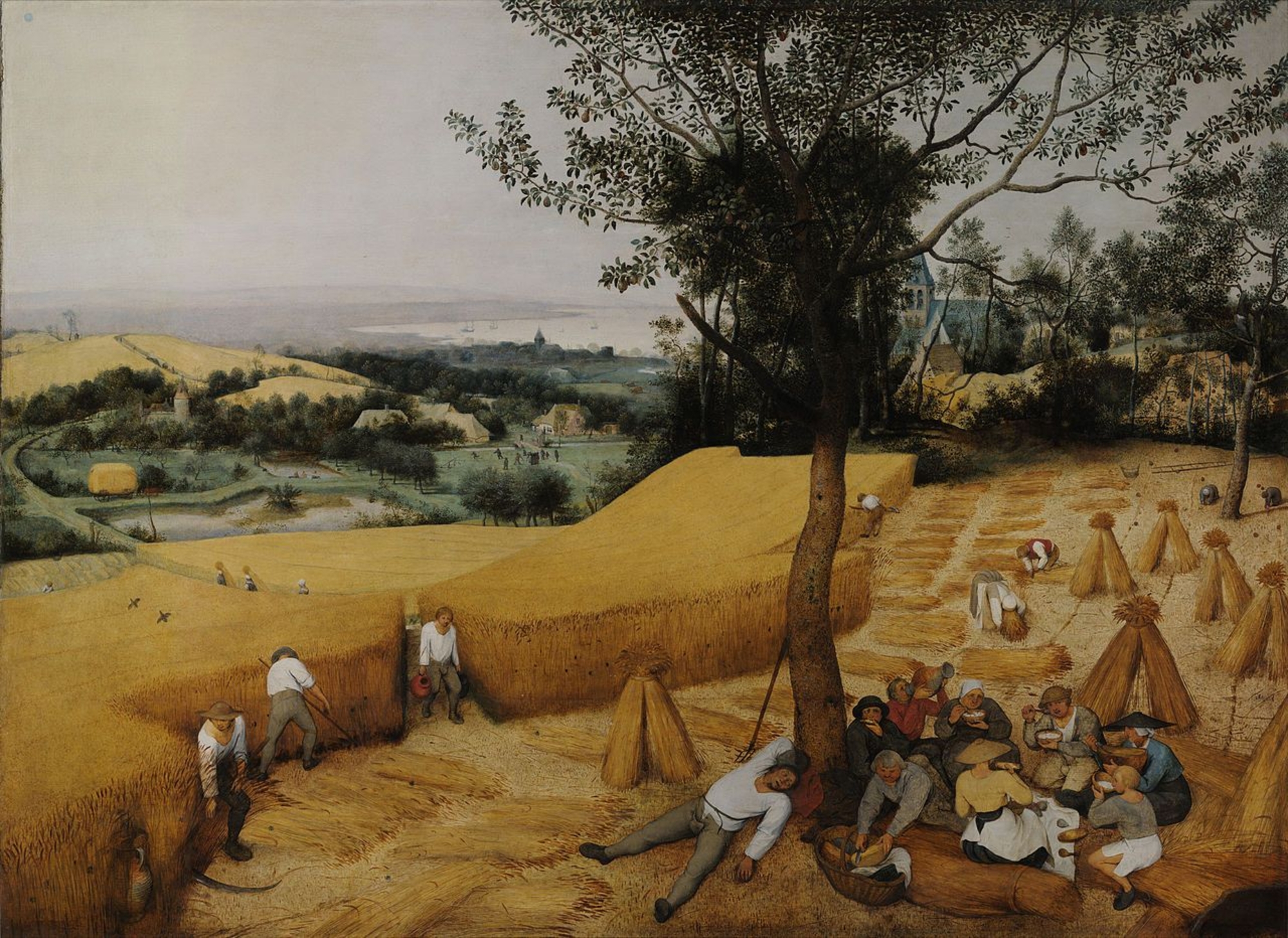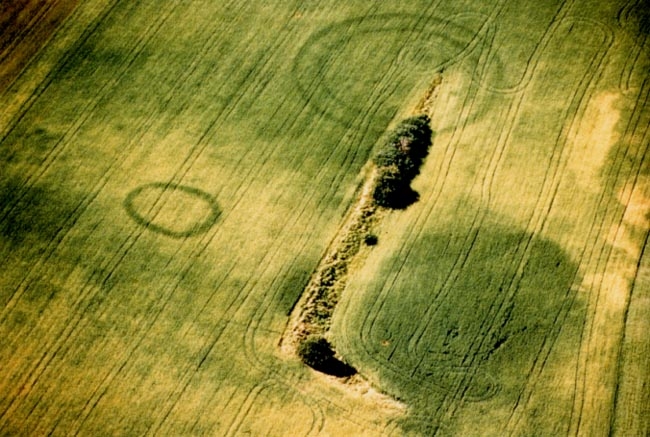- Home
- Discoveries
- The first metalworkers
- A few rare monuments still above ground
Tumulus still above ground on the crest of a hill at Eramecourt (Somme). Photo: J.-C. Blanchet.
More rarely, these funerary monuments may still be above ground in zones that have remained uncultivated for a long time, such as at Eramecourt (Somme) where, during the last century, cremation graves were found under mounds of stone and earth, placed inside vessels protected by stone slabs. The oldest such ensembles are often of significant proportions (between 25 and 60 meters in diameter).
A dozen graves of this type were recently excavated in the Picardy region, for example at Crouy (Somme). Those which could be dated are generally from the Early and Middle Bronze Age.
In the Late Bronze Age, the circles are smaller, often irregular, and grouped. There are also several large, elongated enclosures ("Langgräben" in German), mostly in the eastern part of the region, and others, more rare and smaller, in the form of keyholes. This latter group has been dated to the late Bronze Age and early Iron Age.
Late Bronze Age funerary enclosure. The small enclosure was excavated by B. Bréart and J.-P. Fagnart, and yielded a cremation burial in a vase. Crouy (Somme).
Elongated funerary enclosure with nearby circles, at Brutelles (Somme).



